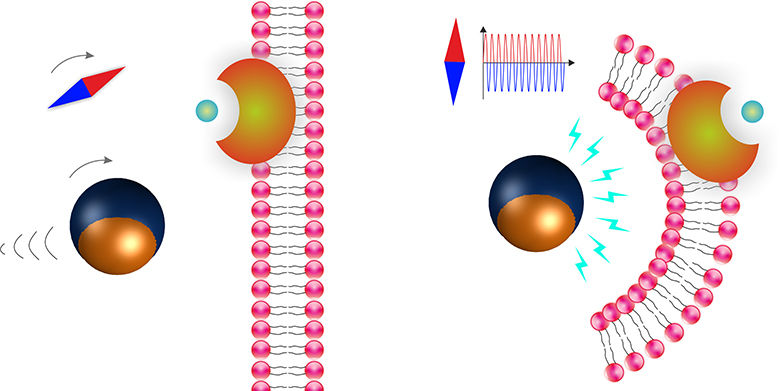D-Cycloserine Reduces Cocaine-Seeking Behavior in "Addicted" Mice
Antibiotic that appears to control phobias may also be useful in treating addiction
Scientists at the U.S. Department of Energy's Brookhaven National Laboratory provide further evidence that a drug known as D-cycloserine could play a role in helping to extinguish the craving behaviors associated with drug addiction. Their study found that mice treated with D-cycloserine were less likely to spend time in an environment where they had previously been trained to expect cocaine than mice treated with a placebo.
"Since the association between drugs and the places where they are used can trigger craving and/or relapse in humans, a medication that could aid in the reduction or even extinction of such responses could be a powerful tool in the treatment of addiction," said Carlos Bermeo, a Stony Brook University graduate student working under the direction of Brookhaven Lab neuroscientist Panayotis (Peter) Thanos.
D-cycloserine was originally developed as an antibiotic. But it has also been shown to extinguish conditioned fear in pre-clinical (animal) studies, and has been successfully tested in human clinical trials for the treatment of acrophobia (fear of heights). This finding led several researchers to wonder whether D-cycloserine could extinguish drug-seeking behaviors as well.
In 2006, a group of scientists not affiliated with Brookhaven Lab tested this hypothesis in rats. They found that D-cycloserine facilitated the extinction of "cocaine conditioned place preference" - the tendency for the animals to spend more time in a chamber where they had been trained to expect cocaine than in a chamber where they had no access to the drug.
The Brookhaven study builds on the previous work and adds information on the drug dose effect, the lasting properties of the treatment, and the locomotor effects of this compound.
Bermeo and Thanos' group worked with C57bL/c mice. Animals were first trained to receive cocaine in a particular environment. Once conditioned place preference was established (that is, animals willingly spent more time in a cocaine-paired environment than in a "neutral" environment), the mice were treated with either D-cycloserine or saline and allowed to spend forty minutes in either the previously cocaine-paired environment (with the drug no longer available) or the neutral environment.
Mice treated with D-cycloserine showed less preference for the cocaine-paired environment and did this more rapidly than mice treated with saline. The low dose (15 milligrams D-cycloserine per kilogram of body weight, given intraperitonially) showed a 10 percent decrease in time spent in the previously cocaine-paired environment, and the high dose (30 mg/kg i.p.) showed a 17 percent decrease in the time spent in the previously cocaine-paired environment. The high dose produced a more pronounced and consistent extinction than the lower dose.
Interestingly, animals treated with the high dose of D-cycloserine exhibited lower locomotor activity compared to both the low-dose D-cycloserine group and the saline-treated animals. These two groups exhibited similar levels of locomotor activity. This indicates that dosing may have to be fine tuned to achieve optimal efficacy with minimum side effects.
"It's important to remember that these are very preliminary results from a small animal study," Thanos cautions. "Much further research will be required before testing this drug in humans. But it is inspiring to know that this drug may show promise in treating cocaine addiction, which continues to take a toll on society and for which no pharmacological treatment currently exists."
Organizations
Other news from the department science

Get the life science industry in your inbox
By submitting this form you agree that LUMITOS AG will send you the newsletter(s) selected above by email. Your data will not be passed on to third parties. Your data will be stored and processed in accordance with our data protection regulations. LUMITOS may contact you by email for the purpose of advertising or market and opinion surveys. You can revoke your consent at any time without giving reasons to LUMITOS AG, Ernst-Augustin-Str. 2, 12489 Berlin, Germany or by e-mail at revoke@lumitos.com with effect for the future. In addition, each email contains a link to unsubscribe from the corresponding newsletter.






















































